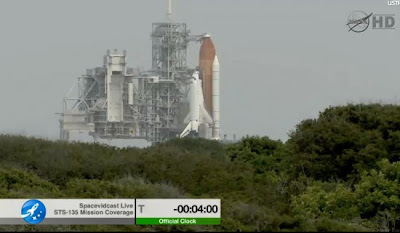I recently learned that I share a trait with my absolute favorite animal, the polar bear, in that we can both trace our ancestry back to Ireland. For people who follow this blog, or have at least looked back through the archives a bit, you’ll see that I find it impossible to pass up a good polar bear story. I’ve written about animal healthcare, mysterious death, and the polar bear’s status (or lack thereof) as an endangered species. So it should come as no surprise that I can’t pass up the opportunity to talk about this new research that shows an ancient Irish connection to modern day polar bears.
 |
| via Wikimedia Commons |
A team of researchers led by Beth Shapiro of Penn State University and Daniel Bradley of Trinity College (Dublin) has identified a common ancestor of polar bears (Ursus maritimus) and brown bears (Ursus arctos) that lived in Ireland before the peak of the last ice age some 20,000 to 50,000 years ago. The researchers concluded that all modern day polar bears can trace their lineage back to this ancient female brown bear. The specific lineage of the brown bear that shared their mitochondrial DNA with polar bears went extinct around 9,000 years ago, but the research still shows that the modern species are related.
Despite significant differences between polar bears and brown bears (size, coloring, fur type, tooth shape, swimming ability vs. climbing ability, etc.) scientists have suspected for some time that the species have closely connected histories. The polar bear is known to have mitochondrial DNA (the part of the genome contributed by the mother) that traces back to the brown bear. But how modern polar bears acquired this brown bear DNA was a bit of a mystery.
 |
| via Wikimedia Commons |
The two species are known to interbreed, and have been studied in captivity in addition to being spotted in the wild. An example of a polar bear/brown bear hybrid, jokingly nicknamed grolar bear or pizzly, was found in the wild Canada in 2006. But, even with the knowledge that the two species can co-mingle scientists were still perplexed about the history of these different species. The long standing theory about how polar bears evolved from brown bears had their history traced to the ABC Islands (the Alaskan Islands of Admiralty, Baranof, and Chichagof) around 14,000 years ago. But the bears’ genomes tell us a different story.
The research team led by Shapiro and Bradley found that the hybridization of polar bears occurred much earlier than would have been possible on the ABC Islands through a genetic analysis of the bears. The study analyzed 242 samples from polar bear and brown bear mitochondrial DNA spanning 120,000 years and several different geographical regions. The researchers found that the fixation of the mitochondrial genome in polar bears likely occurred closer to 50,000 years ago in the area of present-day Ireland.
According to Shapiro, in addition to genetic evidence, the interconnected history of the polar bear and brown bear is also supported by climate events. One example of this is the British-Irish ice sheet, which reached its maximum range around 20,000 years ago. At this time parts of Ireland would have been difficult to inhabit, pushing bears from the warmer areas toward ice shelves and land exposed by lower sea levels. This would have brought the bears into close contact with their northern neighbors, showing how the animals that became two different bear species could have started out in the similar location, sharing their genes.
The polar bear is currently considered a threatened species, and future conservation efforts may be aided by this new understanding of its genetic history and its ability to hybridize with the brown bear. The research is described in the paper, “Ancient Hybridization and an Irish Origin for the Modern Polar Bear Matriline” in the journal Current Biology.






